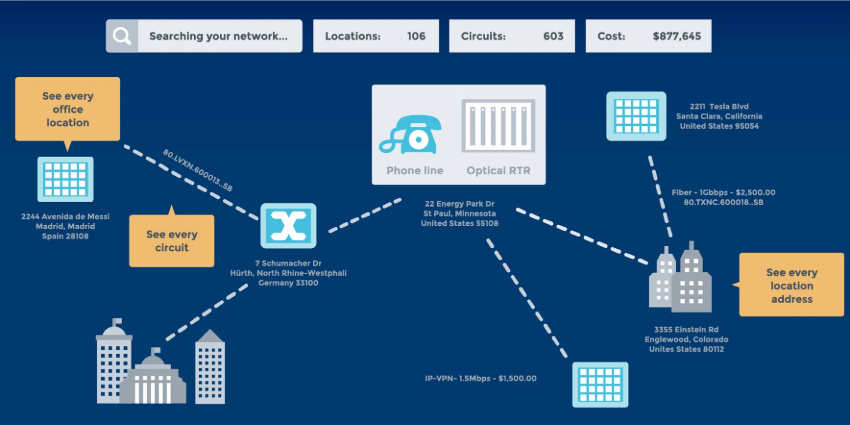Out with the old? Legacy systems have firmly established themselves within enterprises as the majority of businesses rely on the technology they use. Yet, as these systems have become more ingrained in company infrastructure and, more importantly, in an end-user’s daily routine, resistance to change has been rife with many CTOs and business leaders relying on the old mantra:
“if it ain’t broke, don’t fix it”
However, in today’s fast-paced digital environment, over reliance on these traditional, and sometimes antiquated systems, does leave some organisations on the back foot. Legacy systems by their very nature are typically rigid and isolated, having been designed to meet the needs of the siloed enterprise workforces that came before. This inevitably offers very little room for manoeuvre when it comes to business-wide usability – a particular challenge when things such as flexible collaboration and agile thinking are now taking priority amongst many modern business leaders.
A cloud-based transformation
Both employees and customers acknowledge that newer, innovative technologies make their lives easier. For example, in recent years we have seen more and more organisations replace their existing traditional phone systems with modern, cloud-based solutions. Yet despite the clear advantages for a more flexible communications infrastructure, many decision makers are still overwhelmed by the potential drawbacks of implementing new technologies – high costs, significant impact on end-users and fear of the unknown.
As much as combining advanced UC solutions with legacy systems in all corners of a business might sound expensive, these solutions are often more scalable and can be updated more frequently. This, in many cases, means they are more cost-effective than maintaining the likes of out-of-maintenance on-premises PBX systems, which typically also lack the agility needed to enable the collaboration needed for business growth – particularly in today’s remote working era.
As businesses look to drive productivity and engagement amongst their workforce, the pace at which the implementation of Unified Communications solutions has accelerated. These UC solutions can bring staff together, allow them to operate effectively, and cater to a more modern, work/life-balance conscious workforce. Transforming your communication systems to create a smarter workplace can of course be complex, but contrary to the opinion of many, it doesn’t require a complete overhaul of existing legacy IT systems.
Besides, leveraging existing investment, and in particular Video Room systems, is often the only logical option from a financial standpoint. The wave of investment in “standalone” Video Conferencing systems we saw in the last several years means that this installed base is not yet fully amortised. Ensuring its integration within a broader, unified set of Communications workloads is thus a key requirement.
Companies therefore require transitioning scenarios involving coexistence between old and new, mitigating risk and minimising end-user impact. This hasn’t gone unnoticed by providers. We are now seeing leading vendors such as Microsoft, Cisco and their respective ecosystems doing as much as possible to help integrate their customers’ legacy communication systems with the latest cloud-based solutions; helping them drive innovation with smarter interactions and meet the demands of the modern digital workplace.
Driving innovation with UC
As more companies welcome cloud communications into their IT mix and corporate culture, we are now seeing a growing number of businesses adopting transformative Teamwork solutions, such as Microsoft Teams and Cisco Webex Teams. Besides the usual Communications workloads – such as audio conferencing, document sharing, video calling and telephony – these solutions embrace and enhance the way most corporate users are now collaborating: as discrete project teams. Providing the tools that support employees in a way that they actually work can prove pivotal for businesses wanting to drive flexibility and growth, by unlocking new avenues for communication across their entire workforce.
With the latest predictions anticipating the UC market to surge $186 billion by 2026, the benefits of utilising these smart solutions will soon become existential, leaving many companies well poised to drive digital innovation across their entire workforce. When faced with ever shrinking budgets and apprehension to change long-standing processes, it is no surprise that decision makers are often reluctant to completely overhaul their legacy IT solutions.
Achieving this transformation without breaking the bank and not compromising existing investment – such as video systems, site access management, fax systems, etc. – is one of the prime concerns companies are facing right now. This, combined with the need to minimise the impact that change will have on end-users, is often what is holding up decision-makers that have not yet taken the plunge.
However, the business landscape has changed so drastically in recent years, with the ecosystem now consisting of more disruptive startups than ever before. We have to ask, do traditional legacy systems offer the flexibility these innovative companies need? By fully assessing the needs of their own business and making informed choices over exactly what their employees need, the benefits of cloud-based UC will certainly outweigh the hurdles and will allow forward-thinking companies to unlock the potential of a highly engaged and dynamic force in the future.
Guest Blog by Hugues Treguier, Director of Strategy and Products at Arkadin
Hugues Treguier, Director of Strategy and Products is globally responsible for Arkadin’s Unified Communications Strategy and Product Management.







